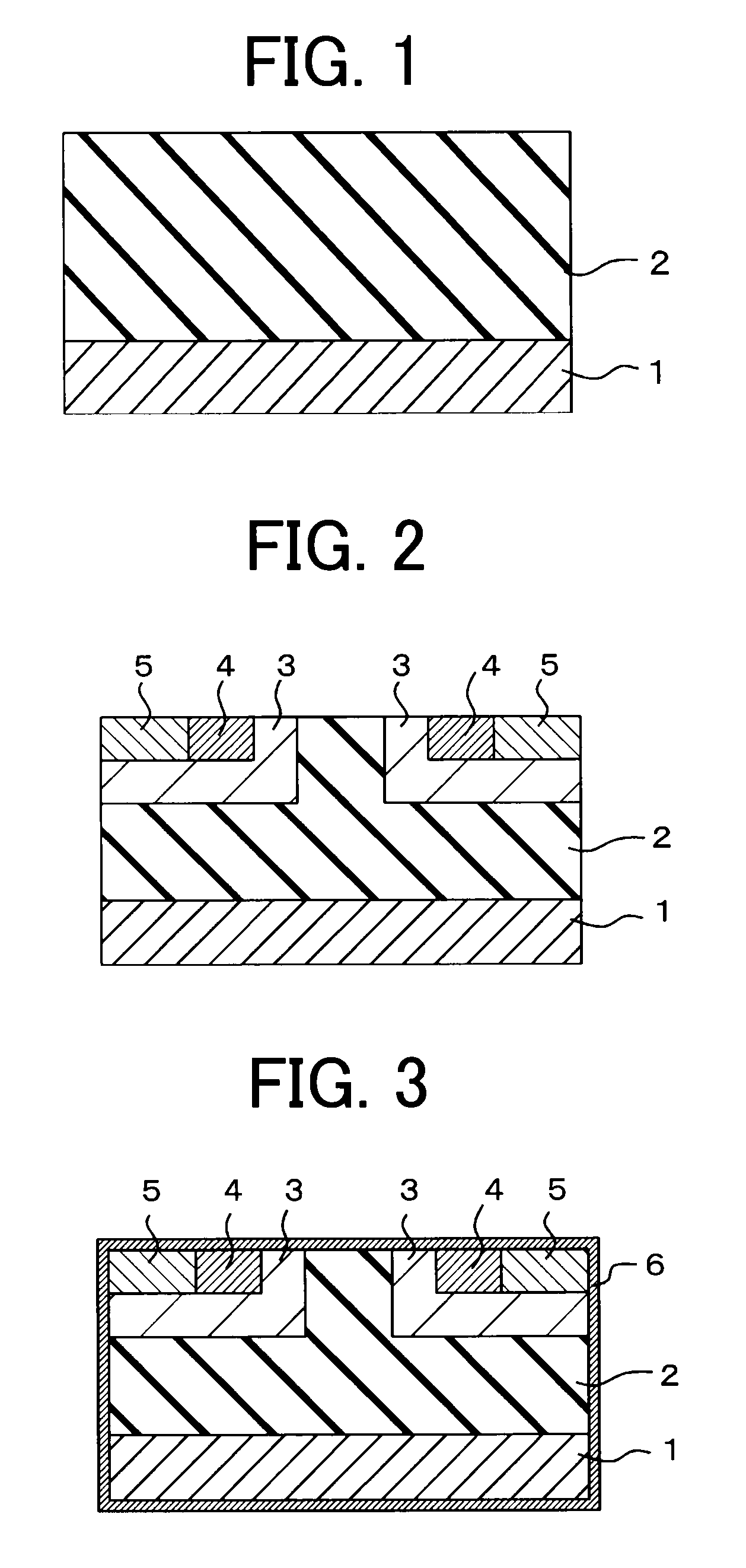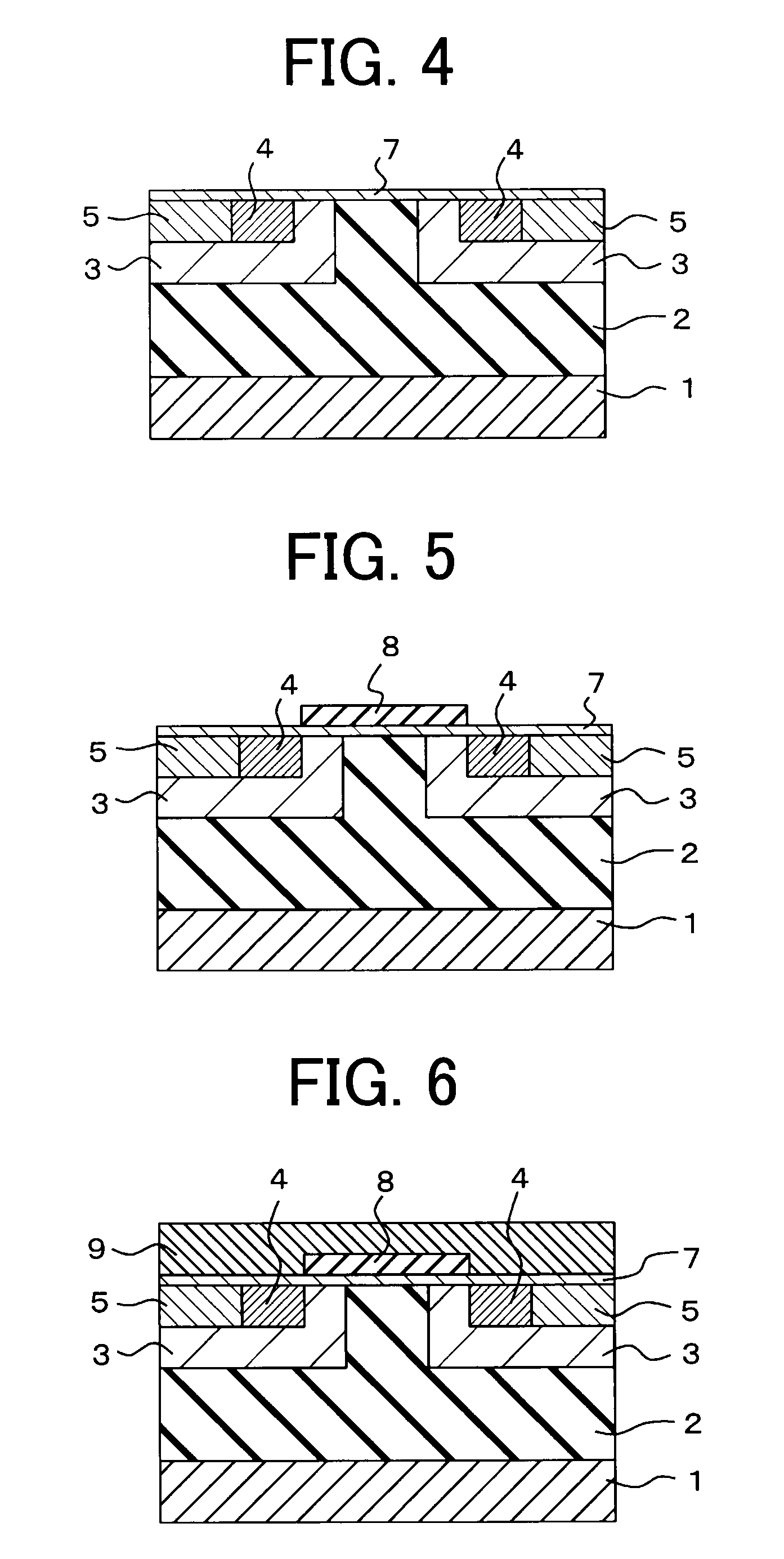Method of manufacturing silicon carbide semiconductor device
a semiconductor device and silicon carbide technology, applied in the direction of semiconductor devices, basic electric elements, electrical appliances, etc., can solve the problems of reducing contactability, deterioration of leakage characteristics, and creating asperity, so as to improve quality stability and manufacturing yield, high purity, and high quality
- Summary
- Abstract
- Description
- Claims
- Application Information
AI Technical Summary
Benefits of technology
Problems solved by technology
Method used
Image
Examples
embodiment 1
[0030]A method of manufacturing a silicon carbide semiconductor device according to Embodiment 1 of the present invention will be described. Here, a method of manufacturing a power metal-oxide semiconductor field-effect transistor (power MOSFET) is explained as an example with reference to FIGS. 1 through 8.
[0031]Firstly, an n−-type (a first conductivity-type) silicon carbide layer 2, which is made of silicon carbide, is formed on one surface of an n+-type (a first conductivity-type) semiconductor substrate 1 by epitaxial crystal growth, as shown in FIG. 1. As the semiconductor substrate 1, for example, an n+-type silicon carbide substrate is preferable. A silicon carbide wafer is made up of the semiconductor substrate 1 and the silicon carbide layer 2.
[0032]Next, a p-type (a second conductivity-type) well region 3 is formed by ion-implanting an impurity into a surface of the silicon carbide wafer using a resist as a mask for the well region. To be more specific, the impurity is ion...
embodiment 2
[0045]In Embodiment 1, the carbon protection film 6 of high quality and high purity is formed over the entire surface of a silicon carbide wafer by pyrolyzing a hydrocarbon gas such as acethylene or methane at a temperature ranging from 900° C. to 1000° C. Moreover, it is assumed in Embodiment 1 that the pyrolysis of the hydrocarbon gas and the formation of the carbon protection film 6 are performed in a CVD deposition apparatus at the same time and in the same process. In contrast, Embodiment 2 is characterized in that a CVD deposition apparatus is constituted with a gas pyrolysis furnace and a deposition furnace on the upstream and the downstream sides, respectively, with respect to a hydrocarbon gas flow, to perform pyrolysis of the hydrocarbon gas and formation of a carbon protection film 6 in separate processes in the respective furnaces. Hereinafter, a method of forming the carbon protection film 6, according to Embodiment 2 will be explained with reference to the illustration...
embodiment 3
[0053]While, in Embodiment 1 and Embodiment 2, the cases of using a hydrocarbon gas such as acethylene, methane, and propane has been explained as examples, a lower alcohol such as ethyl alcohol (C2H5OH: ethanol) and methyl alcohol (CH3OH: methanol), which is one of oxygen-containing hydrocarbons, can also be used. Here, a method of manufacturing a silicon carbide semiconductor device using ethanol or methanol will be described for a case with a power MOSFET as an example. The method of manufacturing the power MOSFET, except for a process of forming a carbon protection film, is the same as that shown in FIGS. 1 through 8 in Embodiment 1; hence the description is made with reference to FIGS. 1 through 8.
[0054]Firstly, an n−-type (a first conductivity-type) silicon carbide layer 2, which is made of silicon carbide, is formed on one surface of an n+-type (a first conductivity-type) semiconductor substrate 1 by epitaxial crystal growth, as shown in FIG. 1. As the semiconductor substrate...
PUM
| Property | Measurement | Unit |
|---|---|---|
| thickness | aaaaa | aaaaa |
| thickness | aaaaa | aaaaa |
| pressure | aaaaa | aaaaa |
Abstract
Description
Claims
Application Information
 Login to View More
Login to View More - R&D
- Intellectual Property
- Life Sciences
- Materials
- Tech Scout
- Unparalleled Data Quality
- Higher Quality Content
- 60% Fewer Hallucinations
Browse by: Latest US Patents, China's latest patents, Technical Efficacy Thesaurus, Application Domain, Technology Topic, Popular Technical Reports.
© 2025 PatSnap. All rights reserved.Legal|Privacy policy|Modern Slavery Act Transparency Statement|Sitemap|About US| Contact US: help@patsnap.com



